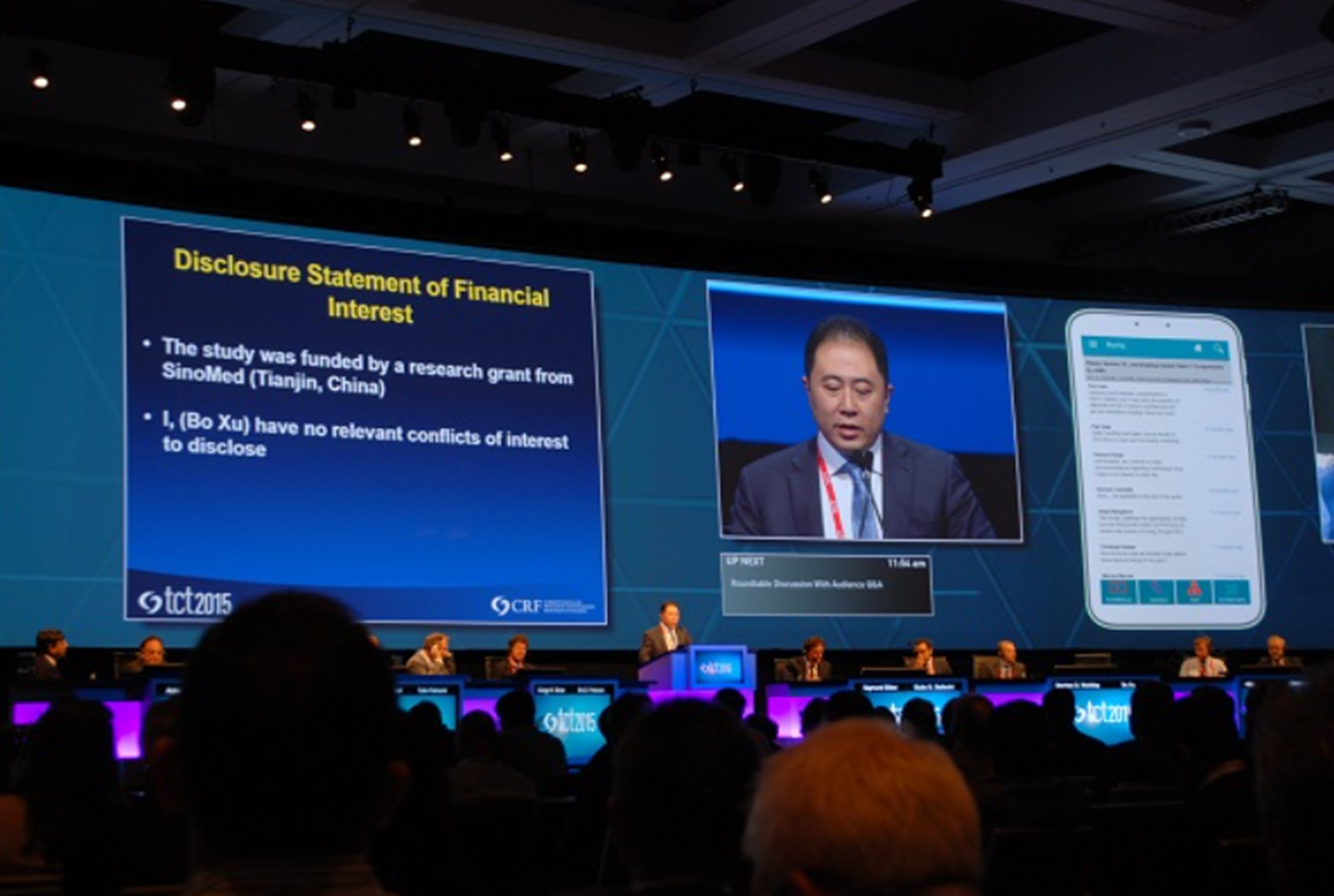Date:2015-10-24
Between 11th and 15th October, one of the world’s largest and influential interventional cardiology conference, TCT conference took place in San Francisco and attracted more than 13,000 industry professionals. During this conference, SINOMED’s latest results of PANDA III trial was revealed during the session “Late-Breaking Clinical Trials” on 14th October which is moderated by Eric D. Peterson and Gregg Stone.

Non-inferiority primary endpoint met
Bo Xu, MD, of Fu Wai Hospital, China, reported data on 2,350 patients (mean age, 61 years; 70% men) enrolled at 46 centers in China with symptomatic CAD, silent ischemia or ACS. Patients were randomized to PCI using the PLGA polymer-based BuMA™ SES (SinoMed; n = 1,174) or the PLA polymer-based Excel™ SES (JW Medical; n = 1,174). Baseline characteristics between groups were well matched, except that the Excel group had a higher rate of prior PCI.
At 1-year follow-up, BuMA™ met non-inferiority criteria compared with Excel for the primary endpoint of TLF, a composite of cardiac death, target-vessel MI or ischemia-driven target lesion revascularization. Individual components of the primary outcome were also similar between the two groups. Cardiac death was 1.2% with BuMA vs. 1.3% with Excel (P = .86), target-vessel MI was 4.3% vs. 4.9%, respectively (P= .49) and ischemia-driven TLR was 1.9% vs. 1.2%, respectively (P = .18). A patient-oriented composite endpoint of death, MI or any revascularization at 1 year yielded equivalent results for both devices.
Stent thrombosis differed
The BuMA SES, however, was associated with a lower rate of definite or probable stent thrombosis compared with Excel: 0.5% vs. 1.3% (p = .047) on an Intention-to-Treat (ITT) basis; 0.4% vs. 1.3% (P=0.01) on a Per-Treatment-Evaluable (PTE)* basis
Given that the cumulative incidence of stent thrombosis was low overall, Xu called for caution, noting that PANDA III “was not powered adequately to evaluate low-frequency safety endpoints such as stent thrombosis.” Nonetheless, he concluded that the decreased stent thrombosis for BuMA seen here is consistent with the BuMA-OCT trial, which showed better strut coverage at 3 months with BuMA vs. Excel (94.2% vs. 90%, P<.0001).
“It’s fascinating” that less strut coverage could be linked with a greater rate of stent thrombosis, commented session moderator and TCT Course Director Gregg W. Stone, MD, of New York-Presbyterian Hospital/Columbia University Medical Center, N.Y. “We’ve never had that linkage before.”
*PTE population consisted of subjects who received only study devices(s) at the target lesion and who had no pre-specified protocol deviations.